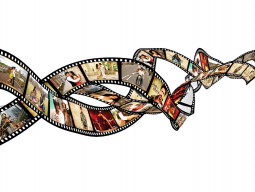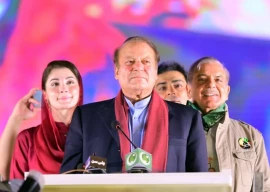
By 1995, the Missus and I began to notice a change. There were fewer cinemas. Audiences were more rowdy. Not so many families in attendance — and then it slid downhill fast. Films that were most definitely not family viewing became common, at a stroke excluding women either singly or together from cinema-going. Prostitution and the cinema joined hands, and the rise in the availability of cheap pornography in the VHS format altered expectations in terms of what the average customer, now almost exclusively male by the late ’90s, hoped to see on the silver screen.
The indigenous film industry went into steep decline — it had been ailing for years — and auditoria were going dark across the country to be replaced by the ubiquitous shopping malls and galloping consumerism overtook a segment of the entertainment industry. Then there was The Great Burning, the torching of cinemas in the spate of rioting that was orchestrated after a blasphemous clip was aired on YouTube and the cinema industry appeared to finally be in its death throes. Wrong again.
At the same time as the traditional cinema with a single screen was putting the last reels on the projector, there was a quickening of the new cinema, a tentative toe in the water of the multi-screen cinema that was linked to fast food outlets and was planted firmly at the ‘family’ end of the cinema market.
It was a gamble that could have so easily failed. The first multiplexes opening in Karachi and Rawalpindi were something of a leap in the dark for the entrepreneurs that put up the money to get them up and running. There was a sceptical press. Where would customers park? Who would go to late-evening screenings? Are people going to pay ticket prices that are five times what a traditional single-screen venue charged? Will women go?
After a slightly faltering start, the multiplex took off in Pakistan and today, if my recent visit to a state-of-the-art cinema in Karachi is anything to go by, the industry is on an uptick.
Go anywhere in the world and you will find dodgy cinemas, but they are in a minority. Cinemas globally are very much geared to the family market and screen a basket of films that are designed to impact across age and gender groups. The film-making companies are global franchises and have brought a not-always-welcome homogeneity to the hero and heroine roles — but no matter.
For Pakistan, the multiplex and family-friendly films that are low on prurience but high in their ability to put bottoms on seats, young and old, male and female, have been an essential shot in the arm.
The prices are higher but the experience when viewed in the round is consistently pleasant and speaks of the growth of a service culture that has a quality base, and where the customer really is the most important thing in the building.
Our vehicle was securely parked. We enjoyed some surprisingly good Chinese fast food before the main attraction. The seats were clean and the entire cinema completely litter free. Nobody shone a laser at the screen during the film, the 3D worked perfectly, the sound system was pin-sharp, people laughed and gasped in all the right places, and at the end, we exited, a muted excited chatter running around, with couples, women and children, and even groups of young men who had not disrupted nor harassed anybody, going happy into the night.
The venue was at about 50 per cent capacity, which for a midweek evening was probably not bad. I was told that weekends were regularly booked to capacity and I have no reason to doubt it. There was a mix of Urdu and English-language films, all mainstream and nothing to worry the censor. The cinema in Pakistan is alive and well. Repeat business? You betcha, three tickets, please.
Published in The Express Tribune, January 9th, 2014.
Like Opinion & Editorial on Facebook, follow @ETOpEd on Twitter to receive all updates on all our daily pieces.
COMMENTS (8)
Comments are moderated and generally will be posted if they are on-topic and not abusive.
For more information, please see our Comments FAQ




























1714024018-0/ModiLara-(1)1714024018-0-270x192.webp)









I am glad to see film cinema industry is doing well. It is heartening to see that some things have started to go in the right direction. One good thing always lead to another... We still have a long way to go. . Re: subsidizing: Mass subsidizing only makes people lazy and manipulate the system to churn out rubbish. Even in the UK govt stopped tax incentives as they were used to take money from govt instead of producing a quality film. If subsidizing was so good, India and Turkey would have been winning oscars every year.
@Enam: Less import uties on the occassional import of equipment is a subsidy? Far from subsiding movie industry, it has high entertainment tax in India.
@Author: I agree with you that having entertainment options for the entire family is a very desirable ting. If this is happening in Pakistan, that is a good sign.
The country had a burgeoning music industry with dozens of music channels as well as hundreds of FM channels most of them being purely music channels. Also the Pakistani film industry was doing quite good in the early decades till 80's. It was just a matter of time before it revitalizes and regroups. The private television channels with all the technology/manpower and finances are also helping in re-emergence of cinema in Pakistan.
http://en.wikipedia.org/wiki/Listofradiochannelsin_Pakistan
http://en.wikipedia.org/wiki/Listoftelevisionstationsin_Pakistan
@ Enam A lot of countries including Pakistan subsidize their Film industry more than India without any success. India's success in movie making comes from a culture of Tolerance, Acceptance of new ideas and thoughts and a triumph of talent over government picking winners and losers. Though Muslims are a minority in India, they tend to dominate Bollywood and Indians have no problem in accepting that. Pakistan can construct Multiplexes easily but changing its culture is more elusive. Having 3 hits in 5 years does not make an industry. Also, all these multiplexes owners are taking a risk with their own money and their investors money and all their hard work can ber erased overnight by a xenophobic rabble rousing Politician, Mullah or Judge.
Cinema industry in Pakistan is reviving...many newand most importantly educated filmakers are in market now and big companies and francises are started financing films...50 more multiplexes are expected to be open this year across the country....they are even collabrating with Hollywood guys in film making techniques...i can see a very bright future for pakistani movie industry in years to come if things would remain go like they are going now....
As is showing Indian as well as Turkish movies in addition to English and Pakistani films. Greater variety and choice for people, more competition for our industry, cultural awareness and broadening of our horizons. Films from other countries should also be introduced. This would not only revamp our entertainment and business sector but also help ties with other countries. I have seen Waar, Bol and Khuda k liye. Watch a lot of English and some Indian movies. Going to watch the Turkish movie as well. Objections to threats to out local film industry need to be quashed. The customer is always right and this is what the customers want.
Absolutely right...........the return of the cinema is a much needed development in our entertainment culture.